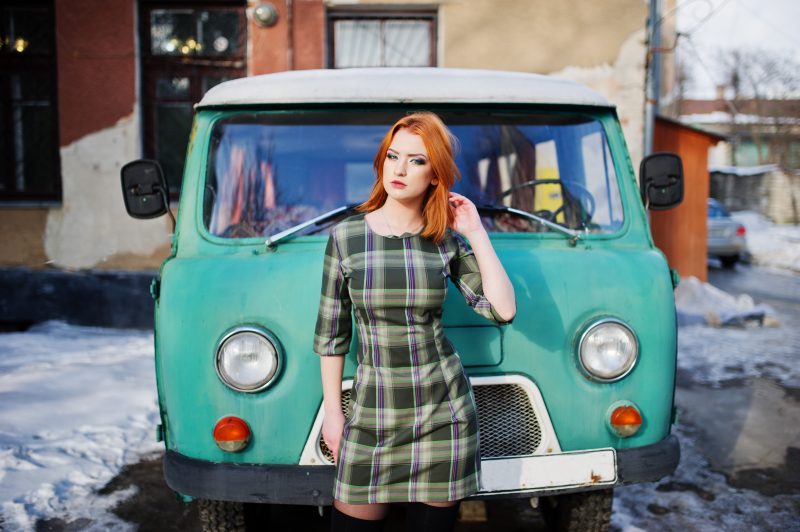I’m staring at the pile. You know the pile. That specific chair in your bedroom that’s no longer furniture but a liminal space between clean and dirty clothes. Sitting on top is my silk Equipment shirt (lovely, elegant, cost me a week’s food budget in 2018) with a microscopic splash of coffee on the cuff. Beneath it, a wool mix blazer worn exactly twice that somehow smells like someone else’s perfume. And at the bottom, almost hidden as if trying to escape notice, a cashmere jumper that I’ve been meaning to take to the dry cleaner since approximately last March.
The pile grows. My motivation to actually do anything about it remains subterranean. Every time I get dressed, I find myself reaching past these supposedly prized possessions to grab something – anything – that I can throw in the washing machine without a second thought.
This, my friends, is the reality of ‘dry clean only’ ownership. Those three little words on a care label might as well read “future guilt factory” or “expensive wardrobe decoration” or simply “who are you kidding?”

I’m not alone in my complicated relationship with dry cleaning. My friend Leila once wore the same silk dress to four consecutive weddings rather than get it cleaned between events. “I just sprayed it with vodka and hung it in the bathroom while I showered,” she admitted, as if describing a perfectly normal fabric care routine. “The fourth time I wore it, someone spilled red wine down the front, and I was secretly relieved because it forced my hand.”
The British woman’s approach to dry clean only items exists on a spectrum that ranges from “fanatical adherence to label instructions” to “what care label? I can’t read suddenly.” At one end is my colleague Tomas, who schedules monthly dry cleaning appointments in his Google calendar and has a special section in his wardrobe for “items pending cleaning” – complete with a spreadsheet tracking wear count. At the other end is my university friend Emma, who routinely puts cashmere jumpers through a normal 40-degree wash cycle and seems genuinely surprised when they emerge looking like they’d fit a particularly fashionable hamster.
Most of us live somewhere in the anxious middle, treating dry clean only labels as more of a suggestion than a command, while harboring deep-seated guilt about potentially ruining clothes we’ve spent good money on. It’s a special kind of fashion purgatory.
The fact is, for the average British woman, dry cleaning presents a perfect storm of inconvenience. First, there’s the logistical faff – finding an establishment you trust (harder than it sounds), remembering to drop items off during opening hours (seemingly designed for people who don’t have jobs), and then remembering to pick them up again (I currently have a wool coat that’s been ready for collection since before Christmas. Last Christmas.).
Then there’s the cost. At my local dry cleaner in Peckham, a silk blouse costs £9.50 to clean – roughly equivalent to two reasonably nice coffees or a budget lunch. A wool coat is £24. A dress with “special construction” (which apparently means “has more than three seams”) can run north of £15. When you’re trying to be financially responsible, it’s hard to justify spending the equivalent of a week’s grocery shop on cleaning your special occasion wardrobe.
And finally, there’s the environmental concern. Traditional dry cleaning uses perchloroethylene (known as “perc”), a chemical that’s about as friendly to the planet as a fleet of monster trucks doing donuts in a nature reserve. While more eco-friendly alternatives exist, they’re often more expensive or harder to find, creating yet another layer of decision fatigue when all you want is a clean bloody jumper.
All of which leads to The Great British Dry Clean Avoidance Strategy – that complex dance we do to extend the wearable life of our dry clean only items to truly heroic lengths. I’ve witnessed (and employed) techniques that would make professional textile conservators weep.
There’s the Bathroom Steam Method – hanging garments in the bathroom while you shower, hoping that somehow the steam will magically refresh them. This works approximately 12% of the time and leaves your bathroom looking like a particularly sad boutique.
The Spot Clean Gamble – carefully dabbing at stains with a barely damp cloth, holding your breath the entire time like you’re disarming a bomb, only to create a perfect water ring that’s more noticeable than the original mark.
The Freezer Technique – putting jeans or knitwear in the freezer overnight to “kill bacteria” (dubious) and “remove odors” (more dubious). This primarily results in taking up valuable ice cream storage space and having to explain to housemates why there’s a cashmere jumper next to the fish fingers.
And my personal favorite, the Febreze and Prayer Approach – a liberal application of fabric freshener followed by hanging the item near an open window, accompanied by fervent wishes that somehow molecular science will bend to your will.
I’ve reached the point where I actively consider the dry cleaning burden before purchasing anything. That stunning ivory wool coat? Calculated the annual maintenance cost and added it to the price tag. That silk midi dress? Mentally prepared for it to be a one-season wonder once the inevitable disaster strikes. The vintage velvet blazer? Accepted that it will develop its own unique scent profile that becomes part of my personal brand.
The most frustrating part is that the dry clean only label itself isn’t always the final word. Textile experts (and brave souls on fashion forums) routinely claim that many supposedly dry clean only items can actually be hand washed or put through delicate machine cycles with minimal risk. The label, they say, is often a catch-all liability protection for manufacturers rather than a true care requirement.
This information should be liberating but instead creates a new anxiety spiral. What if the experts are wrong? What if my particular garment is the exception? What if I ruin the most expensive blouse I own because someone on a Reddit thread said silk is “totally fine” in cold water?
I decided to conduct some scientific experiments. If by “scientific” you mean “driven by desperation and a pathological avoidance of making an extra errand stop” and by “experiments” you mean “reckless gambles with my wardrobe.”
The first test subject was a grey cashmere jumper labeled dry clean only. After wearing it approximately eight times (spread over two years because of cleaning avoidance), I finally took the plunge and hand washed it in lukewarm water with a capful of wool detergent. Reader, it survived. Not only survived but came out looking better than it had after its last professional cleaning, where they’d somehow managed to create a mysterious sheen on one elbow that made it look like I habitually leaned in butter.
Emboldened, I moved on to a silk camisole – the cold water hand wash technique followed by hanging to dry away from direct sunlight. Again, success, though the ironing afterward required the kind of focused attention I haven’t given anything since my university finals.
The line was drawn at my structured wool blazer with padded shoulders and proper lining. Some risks aren’t worth taking, especially when the potential downside is looking like I’m deliberately trying to bring back the shrunken jacket trend from 2008.
These minor victories created a false sense of confidence that led to my most spectacular care label defiance yet: putting a “dry clean only” viscose dress in the washing machine on the delicate cycle. I still maintain that the label was being overly cautious, but the dress’s transformation into something more suited to a much smaller woman with completely different proportions suggests otherwise. It now lives with my friend’s 12-year-old daughter, who was delighted to receive a “vintage” designer piece. I didn’t have the heart to tell her it was six months old.
The real problem, I’ve decided, isn’t just the dry cleaning itself – it’s the cognitive load of having multiple items in wardrobe limbo. It’s the mental energy spent calculating exactly how many more wears you can eke out before cleaning becomes non-negotiable. It’s the subtle anxiety of wondering if other people can tell that your “good” jumper hasn’t seen the inside of a dry cleaning bag since you bought it.
This peculiarly British phenomenon seems tied to our national character – that specific combination of thriftiness, pragmatism, mild guilt, and a pathological fear of being a bother. We’ll spend £200 on a beautiful coat but balk at the £20 it costs to clean it properly. We’ll agonize over whether that barely-there mark is worth a special trip to the dry cleaner or if we can get away with strategic accessorizing to hide it.
I conducted a highly unscientific survey among my friends (wine was involved, margins of error are significant) about their dry clean only habits. The results were both reassuring and mildly horrifying.
Sixty-seven percent admitted to having items they’ve never cleaned despite multiple wears. Eighty-three percent have attempted some form of home refreshing technique instead of proper cleaning. A shocking ninety-one percent confessed to having at least one item they’ve stopped wearing entirely because it needs cleaning and they can’t face the faff of dealing with it.
My friend Sarah, normally a highly functional adult who manages a team of twenty at a tech company, admitted she currently has a silk dress hanging on her bedroom door handle with the dry cleaning ticket still attached from fourteen months ago. “It’s been there so long I’m now emotionally attached to the ticket,” she said. “Sometimes I look at it and think, ‘that’s future Sarah’s problem,’ but I’m starting to realize I am future Sarah.”
Another friend, Amina, has developed what she calls “the sniff radius” – the minimum distance she maintains between herself and other people when wearing items that should have been cleaned several wears ago. “If I’m standing slightly farther away than normal while talking to you, it’s because I’m on wear number five of this blazer,” she explained.
My mother, predictably, has no such issues. A woman who irons tea towels and has her winter and summer wardrobes professionally cleaned during their respective off-seasons, she finds my approach to garment care somewhere between amusing and disappointing. “I don’t understand why you buy these fancy things if you’re not going to look after them properly,” she says, conveniently forgetting that my clothing maintenance habits are a direct genetic inheritance from my father, who once wore the same “good jumper” to seventeen consecutive family Christmases.
To be fair, there have been genuine innovations in the dry cleaning alternative space. Home dry cleaning kits, while not perfect, can extend the wearable life of lightly soiled items. Specialized fabric refresher sprays have moved beyond the basic Febreze formula to include options specifically for delicate textiles. And steaming – proper steaming with an actual garment steamer, not just hanging things in a damp bathroom – can work wonders for certain fabrics.
The rise of eco-friendly dry cleaners using liquid carbon dioxide or wet cleaning processes has also made the professional option slightly less guilt-inducing from an environmental perspective, if not a financial one. These methods avoid the more harmful chemicals while still giving you the smug satisfaction of a perfectly pressed garment in a proper plastic sheath (which you’ll then feel guilty about because, you know, plastic).
After years of playing chicken with care labels, I’ve finally developed what I consider a reasonably balanced approach to the dry clean only dilemma. Items fall into three categories:
The Non-Negotiables: Things that absolutely must be professionally cleaned. For me, this includes structured blazers, anything with significant tailoring, heavy wools, and items with multiple fabric types. These get worn sparingly and with the caution of someone handling unexploded ordnance.
The Calculated Risks: Items that say dry clean only but can probably handle careful hand washing based on their fiber content. Cashmere, most silk, and lightweight wools fall here. I’ve accepted that occasional disasters will occur, but the convenience versus potential loss calculation makes sense.
The Life’s Too Short Brigade: Things that technically need special care but that I’ve decided aren’t worth the mental energy. If I can’t chuck it in the machine on a delicate or hand wash cycle, I either don’t buy it in the first place or accept it as essentially disposable fashion. This category has grown as I’ve aged, corresponding directly with my diminishing patience for unnecessary complications.
I’ve also established a financial rule of thumb: if something costs less than three times the price of cleaning it, the care label anxiety probably isn’t worth it. A £29 “dry clean only” polyester blouse from the high street that costs £10 to clean? That’s getting the sink-and-wool-detergent treatment, and if it perishes, so be it.
Do I still have The Pile? Of course I do. Currently it contains a black cashmere cardigan with a mysterious mark on the sleeve, a silk blouse worn to two consecutive work events, and a wool dress that honestly isn’t even dirty but has somehow landed in clothing purgatory anyway. But it’s smaller than it used to be, and I’ve made peace with its existence as a necessary side effect of my fashion choices.
The true liberation came when I finally admitted to myself that not everything in my wardrobe deserves or requires the same level of care, regardless of what the label says. Some pieces are genuine investments that merit proper maintenance. Others are fleeting relationships – lovely for a season or two but not destined for long-term commitment. Learning to distinguish between them has saved me money, time, and wardrobe real estate.

As for that Equipment silk shirt with the coffee splash? I finally took the plunge and hand washed it in the bathroom sink last Sunday. It survived beautifully, though the coffee mark is still faintly visible if you know exactly where to look. I’m choosing to consider it a beauty mark rather than a flaw – evidence of a life well-lived rather than a cleaning failure.
Because ultimately, that’s what clothes are for – living in, not preserving in pristine condition for some hypothetical future where I suddenly develop the maintenance habits of the Queen.
The dry clean only items that truly earn their keep in my wardrobe are the ones that make me feel fantastic despite their demanding care requirements, not the ones that induce guilt every time I reach past them for something more practical.
So here’s my highly unqualified advice for navigating the dry clean only dilemma: be honest about your cleaning threshold. Accept that some casualties will occur in the pursuit of convenience. Find a good dry cleaner and use them strategically rather than aspirationally. And remember that no one – literally no one – is noticing that tiny mark on your cuff except you.
Now if you’ll excuse me, I need to finally collect that coat from the dry cleaner. It’s only been three months – practically prompt by my standards.

















